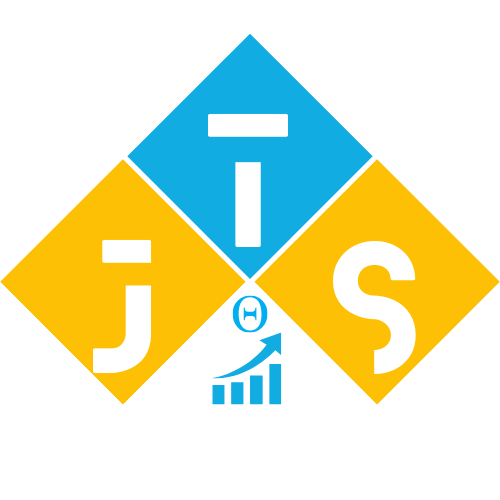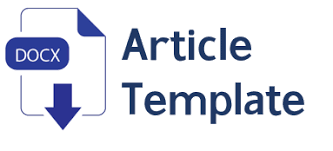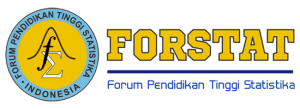Author Guidelines
1. Standard of Reporting
The authors should give a valid account of the work done and an unbiased discussion of its importance. The paper must accurately contain the underlying data. A paper should have enough information and citations for others to be able to do the same work. Fraudulent or knowingly false statements are unethical behavior that can't be tolerated. Professional publication articles should also be accurate and objective and should identify editorial "opinion" works.
2. Exclusivity of Work
The authors should make sure that everything they have written is their own, and if they have used the work or words of others, they should cite or quote them correctly. Plagiarism comes in many forms, such as passing off someone else's paper as your own, copying or paraphrasing large parts of someone else's paper without giving credit or claiming results from research done by someone else. Plagiarism in any form is unethical when it comes to publishing and is not allowed. Generally, an author should only publish manuscripts in one journal or primary publication that mainly describes the same research. Sending the same manuscript to more than one journal at the same time is not an excellent way to publish and is not allowed. Generally, an author shouldn't send a paper that has already been issued to another journal for consideration. We'll think about publishing from a conference paper if it's just a more extended version of the conference paper with at least 30% new information.
3. Hazards and Human or Animal Subjects
If the work uses chemicals, methods, or tools that pose unusual risks when used, the author must state this clearly in the manuscript. Suppose the work uses animals or people as subjects. In that case, the author should ensure that the manuscript says that all procedures were done under relevant laws and institutional guidelines and that the appropriate institutional committee(s) has approved them. The authors should say in the manuscript that they got informed consent from the people who were used as test subjects. The author must always respect a person's right to privacy.
4. Authorship of the Paper and Copyright
The authors contributed to the reported article's concept, design, implementation, or interpretation. Co-authors should include everyone who has made a significant contribution. Those who helped with essential parts of the research project should be recognized or put on a list as contributors. The corresponding author should ensure that all appropriate and inappropriate co-authors are included in the paper and that all co-authors have seen and approved the final version of the article and have agreed to its submission for publication. No manuscript can be published without a signed publication agreement, which transfers the author's rights to the publisher. After the paper is accepted, a copy of that agreement is needed.
5. Acknowledgement
Always give credit where credit is due when you use someone else's work. Authors should mention books and articles that helped them figure out what their work is about. Information gathered privately, like in a conversation, letter, or talk with a third party, can't be used or shared without the source's explicit permission. Information gathered during confidential services, like reviewing manuscripts or grant applications, can't be used without the written consent of the person whose work was being reviewed.
6. Disclosure Requirements
When an author sends in a manuscript, they must say if they have any direct or indirect ties to any organization or entity that has a direct financial interest in the topic or materials discussed (for example, employment, consultancies, stock ownership, grants, patents received or pending, royalties, honoraria, expert testimony). These kinds of financial involvement are common, can't be avoided, and usually aren't a reason to turn down a manuscript. The details of the disclosure will not be made public. No manuscript can be published unless accompanied by a signed publication agreement, which transfers the copyright from the author to the publisher. A copy of that agreement is required after the paper is accepted.
7. Errors in Published Works
When an author finds a big mistake or mistake in their published work, it is the author's responsibility to tell the journal's editor or publisher as soon as possible and work with the editor to retract or fix the paper. Suppose a third party informs the editor or publisher that a published work has a significant mistake. In that case, it is the author's responsibility to retract or correct the paper quickly or show proof to the editor that the original article was correct.
8. Disclaimer
The opinions in articles published in Theta: Journal of Statistics are those of the author(s), not necessarily those of the Faculty of Engineering, Universitas Sultan Ageng Tirtayasa. Theta: Journal of Statistics does not promise that any method, product, process, or device described or named in an article is suitable for any purpose. When trade names are used, it is only to identify them. It does not mean that Theta: Journal of Statistics agrees with them.
9. Manuscript Preparation
Use the English language and the SI system (Système International d'Unités), also known as "International Units." Manuscripts should be sent online through https://jurnal.untirta.ac.id/index.php/tjs/index in MS Word format (made from MS Word). The length of the manuscript, including the abstract, figures, tables, and references, shouldn't be more than 20 printed pages (single space). An abstract of between 150 and 250 words should explain what the manuscript is about and why it is essential. The authors should give 5–10 words or phrases that describe what their manuscript is about. Use Palatino Linotype font with a point size of 11 and a line spacing of 1 for the body of the text. The references should be numbered in the order in which they appear. They should also be complete, with the author's initials, the paper's title, the date, the page numbers, and the name of the society that funded the research. Please make a list of references like the ones shown below. Figures are printed in black and white; you can only find color figures online. Adjust the size of figures and tables as they will appear. All figure captions should be legible, minimum 8-point type. Use Microsoft Equation Editor or MathType add-on (equations using Office 2007 are not acceptable). Equations are numbered consecutively in parenthesis, e.g. (1), and set at the right margin.
10. Templates and Forms
The manuscript template for the review version can be downloaded here.
Author's Statement can be downloaded here.
Review Form can be downloaded here.
11. References
REQUIRED AMOUNT ARE AT LEAST 15 REFERENCES
Using the Simple Text Query form to deposit references : https://doi.crossref.org/simpleTextQuery
Reference examples:
[1] L. Meng, C. Zhang, X. Shao, Y. Ren, and C. Ren, “Mathematical modelling and optimisation of energy-conscious hybrid flow shop scheduling problem with unrelated parallel machines,” Int. J. Prod. Res., vol. 57, no. 4, pp. 1119–1145, Feb. 2019, doi: 10.1080/00207543.2018.1501166
[2] A. James, M. Christ, and B. Dill, “Geospatial Big Data Approaches to Estimate Level Poverty Distribution,” in International Conference on Data Science and Official Statistics, 2023, pp. 625–631.
[3] C. Hermawan, “Spasial Statistik untuk Estimasi dan Peramalan Produksi Kelapa Sawit Studi Kasus: Provinsi Banten,” Universitas Sultan Ageng Tirtayasa, 2019.
[4] R. Hogg, J. McKean, and A. Craig, Introduction to Mathematical Statistics. USA: Pearson, 2012.
[5] Kompas, “Rilis Kinerja Emiten 2022 Jadi Katalis Pergerakan Indeks Saham,” 2023. https://www.kompas.id/baca/ekonomi/2023/01/28/kinerja-emiten-pengaruhi-ihsg.









